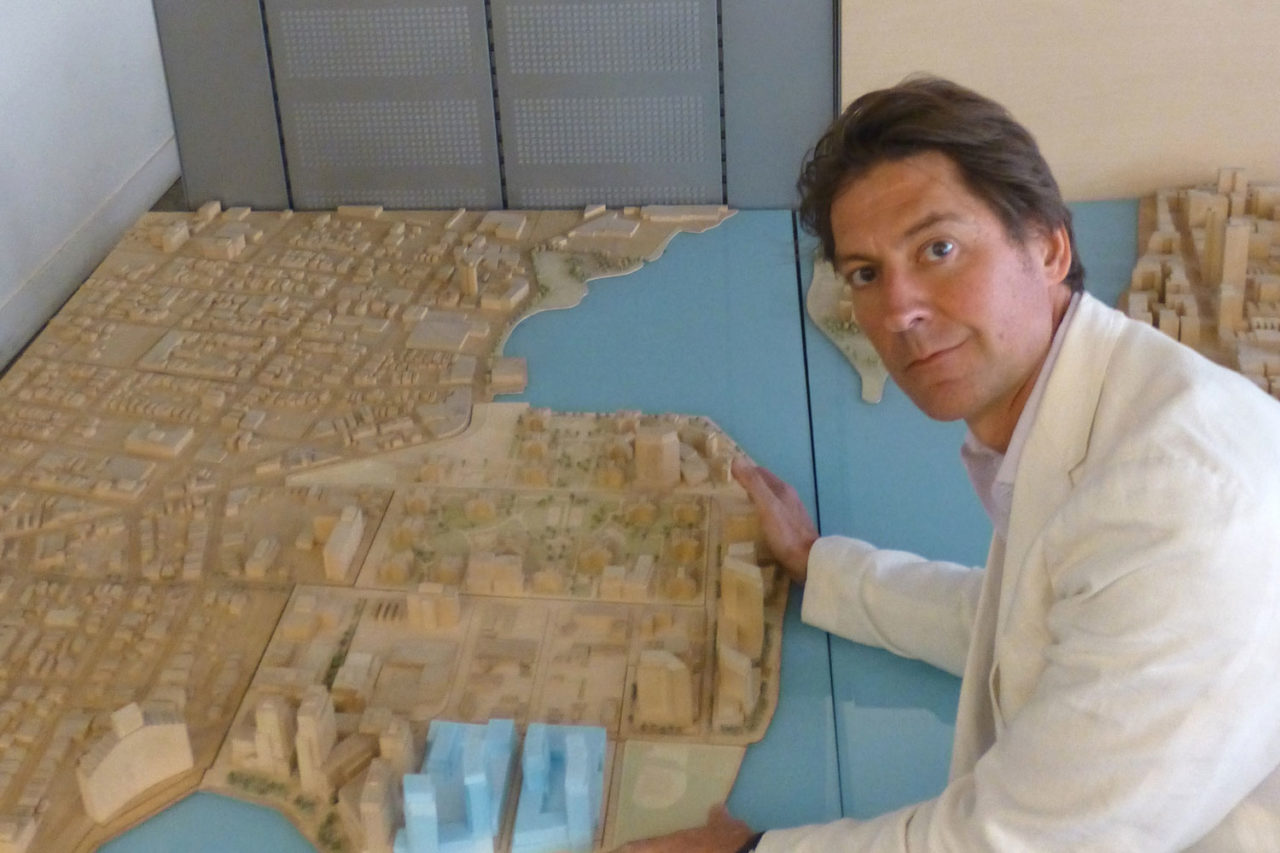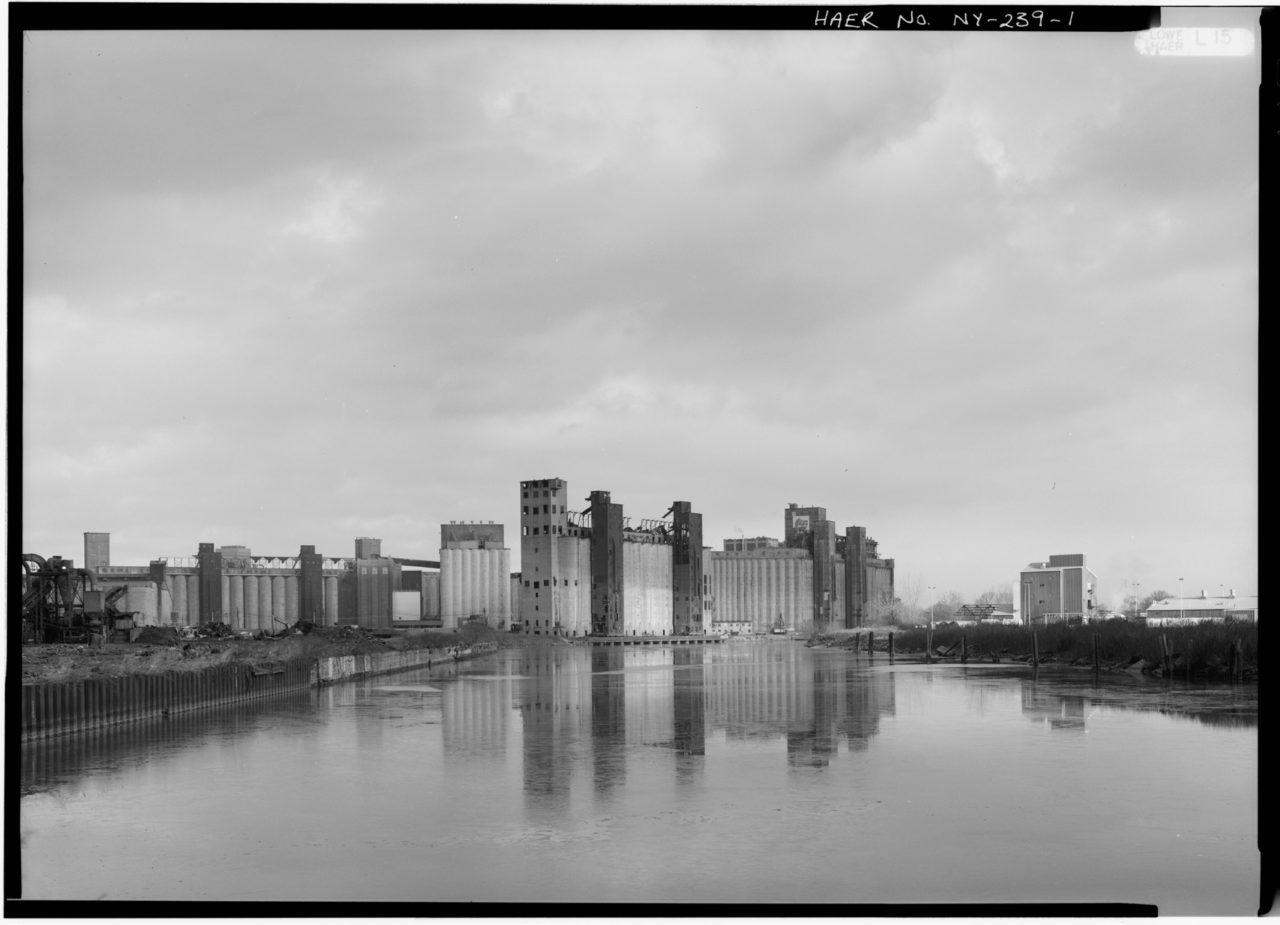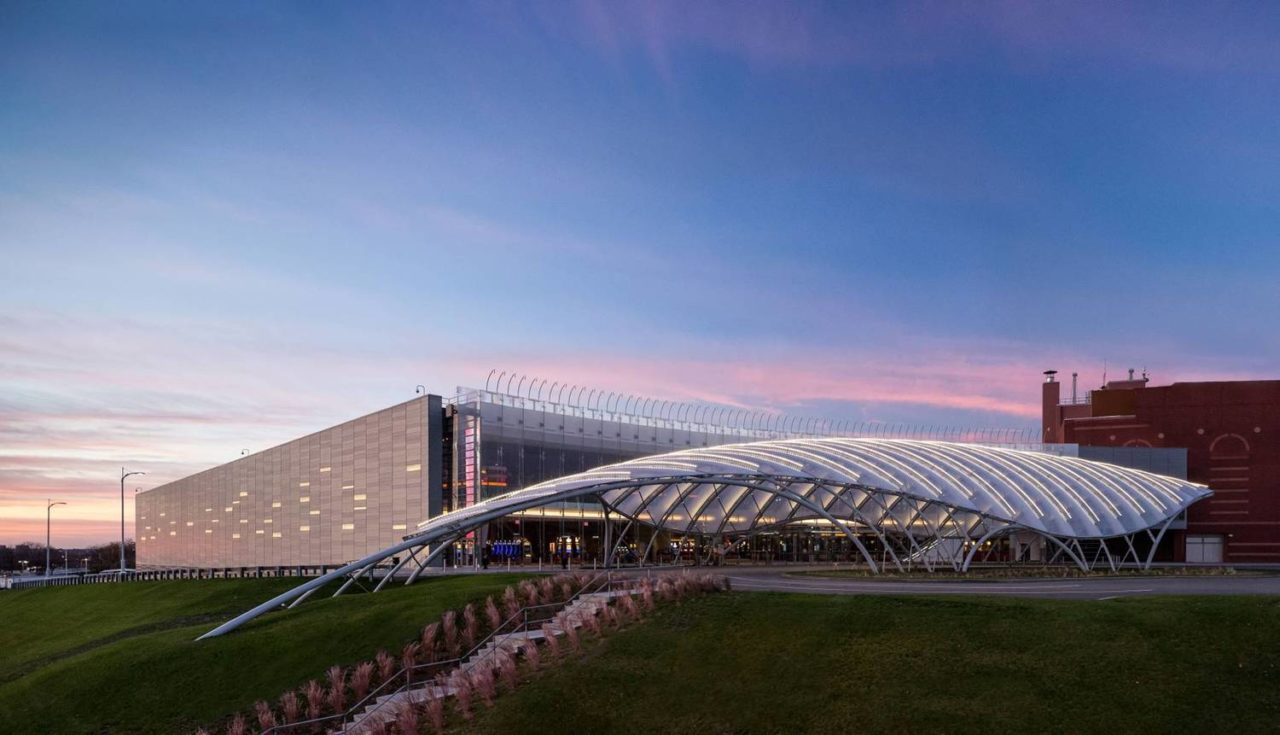by: AIA New York
Jay Valgora,FAIA, AICP, LEED AP, founded and leads an internationally recognized practice, STUDIO V Architecture, based in New York City. His work in architecture, urban design and preservation transform urban edges and reconnect communities, while engaging history and context in innovative ways. Inspired by the grain elevators of his hometown Buffalo, Jay’s architecture focuses on the reinvention of contemporary cities. His designs focus on the provocative intersection between contemporary and historic architecture and artifacts, use of innovative fabrication, and exploring forms grounded in local cultures and communities.
This year, the Jury of Fellows of the AIA elevated Valgora to its prestigious College of Fellows in the first category of Fellowship, which recognizes architects who have “Promoted the aesthetic, scientific, and practical efficiency of the profession,” according to the organization’s definition. While only three percent of the AIA’s membership is distinguished with Fellowship, Valgora’s investiture will be held at a future AIA Conference and virtually at AIANY’s 2020 New Fellows Celebration on December 18. Please join us!
Q: What is influencing your work the most right now?
A: Collaboration. We are weaving together diverse teams and voices to create more innovative designs and provocative ideas now, more than ever before. A big focus in my work as the founder of STUDIO V is building design teams and creative coalitions to formulate more rich and complex ideas, innovative processes, integrate technology, address sustainability and resiliency, and explore new fabrication techniques. We are creating and building unexpected teams with artists, non-profits, unconventional entrepreneurs, makers and fabricators, film makers, tech innovators, scientists, writers, and even the city of New York.
Q: How/why did you decide to pursue architecture?
A: Climbing fences. Growing up in Buffalo, I was inspired by many of the architectural and industrial ruins, especially the iconic ruins of the original grain elevators. Also, visiting my father working in the steel mills, seeing these massive buildings seemingly without end, long perspectival views where I felt you could see the curvature of the earth. The challenges and urban devastation in Buffalo cultivated and nurtured the desire to understand how innovative architecture and place making can help us understand, explore, and reinvent our cities.
Q: How have recent advancements in technology impacted your work?
A: No single technology influences STUDIO V’s work—but bringing together multiple overlapping technologies and tools is transforming all of our approaches to design and execution. Our designs focus on the intersection between digital and physical tools. These create a confluence of technologies: modeling software, 3D printing, drones, parametric tools, CNC fabrication, BIM software, and physical models. Our projects utilize an interwoven combination of many of these tools, each engaging and influencing the next. This allows us to respond to each project’s challenges and develop unexpected and compelling solutions.
Q: What do you see as an architect’s role—and responsibility—within our culture?
Synthesis. I feel architects have unfortunately given up much of their influence in creative leadership. Architects need to engage the real issues facing communities and use our skills to find creative designs that create value, bridge differences, and unite communities. My practice focuses on the “in between”—physically in spaces within cities, and between constituencies that drive our profession. We create innovative designs that bridge competing interests between government, communities, developers, elected officials, and other professionals. A few examples: provocative programs, combining historic artifacts and fragments with contemporary design, bridging public and private initiatives.
Q: How do you feel about the state of the industry right now?
At this time, our industry is not unified. Much like our country, I feel our profession is divided and diverging. Since being elevated, I’ve seen the College of Fellows has an internal communication site where Fellows debate issues in our profession. This has been enlightening to see the divisions within the Fellows and by extension, professionals across our country. I see the next four years as an opportunity to unify our efforts on the real issues facing us: massive new approaches to resiliency, equity, urban reinvention, green infrastructure, renewable energy and the creative approaches to architecture and design that supports these initiatives.
Editors’ Note: This feature is part of a series celebrating the members of the American Institute of Architects (AIA) New York Chapter who are elevated each year to the AIA College of Fellows, an honor awarded to members who have made significant contributions to both the profession and society. Learn more about Fellowship here.













